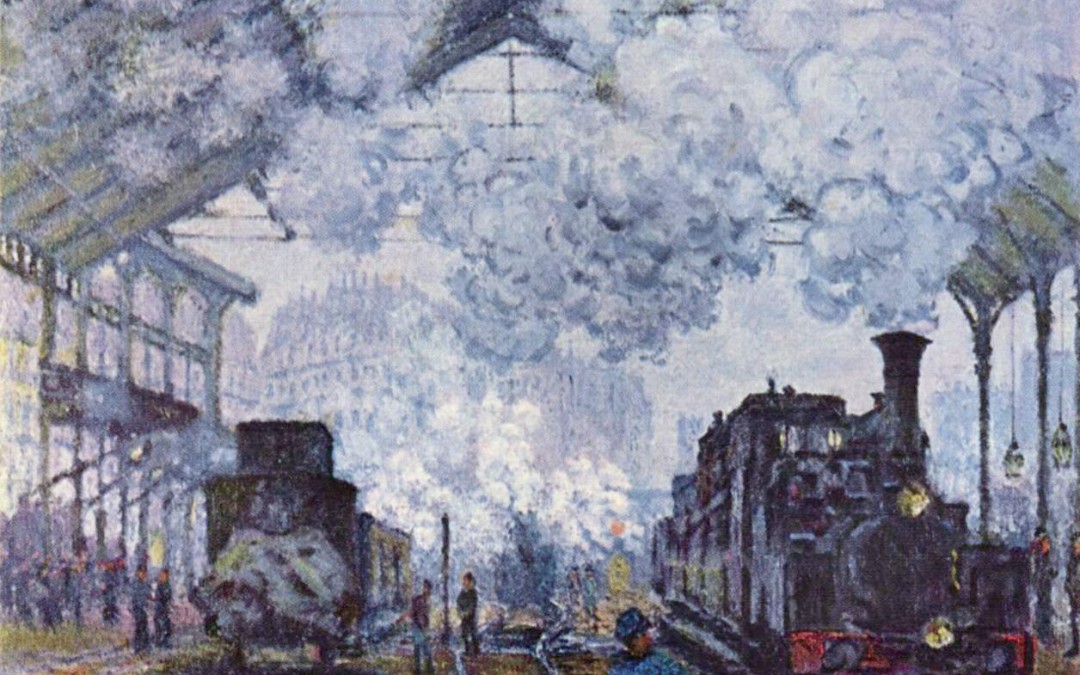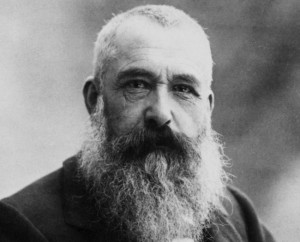The industrial revolution was possible because of increased trade, which in turn created increased revenue, thus accelerated the industrial revolution. The focus of many studies of the industrial revolution focused on factories, mechanized textiles, steam power, and the use of steel, and how they transformed the urban landscapes of the United States and much of Europe. The industrial revolution contributed significantly to the urbanization and growth of cities — and the rise of financiers and industrialists.
The industrial revolution changed the way artists worked, and how they worked. Paints and tools were now mass produced and cheaper, which led way for “starving artists” to become more prolific than they could before. Artists being geniuses for capturing their environments, often used the backdrop of the revolution into their work. Claude Monet’s Gare St-Lazare was a perfect example of his depiction of the changing landscape of the world.
Oscar-Claude Monet was an artist known as being the founder of French Impressionism. In fact, the word “impressionism” comes from his painting Impression, soleil levant (Impression, Sunrise). Though many of his paintings during this era usually represented landscape paintings of the French countryside, Monet adapted his studies of light and shadows of his country landscapes to the changing landscape of the country. Monet used his skill of observation to translate the light and dark of the coming of industrial technology.
In January 1877, Monet rented a small flat and a studio near the Gare St-Lazare, and in the third Impressionist exhibition which opened in April of that year, he exhibited seven canvases of the railway station. Gare is one of four surviving pieces of the interior of the station. Though many artists rendered the station, none were as compelling as this series by Monet.
Instead of showing industry as a grotesque, pollutant, in Monet’s canvas seemed to exist a beauty in its portrayal. Using swift brushstrokes, the artist was able to create an energy and excitement: smoke rising, engines churning, and people crowding on the platform against an industry-covered sky. The choppy, cropped subjects in the foreground to the quick strokes and combination of colors Monet used created a scene of frenetic energy. Being the master he was, there is no doubt that forcing the viewer to shift their eyes back and forth to capture the entire scene was intentional — to create a frenzied symphony of movement.
The iconic painting successfully depicted the smoke and fiery of the Industrial Revolution as it roared into the next era.













